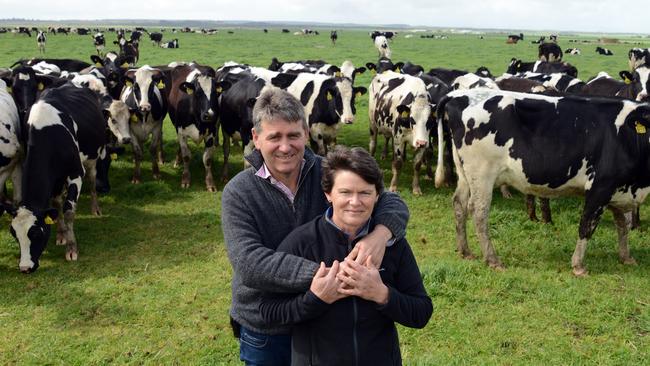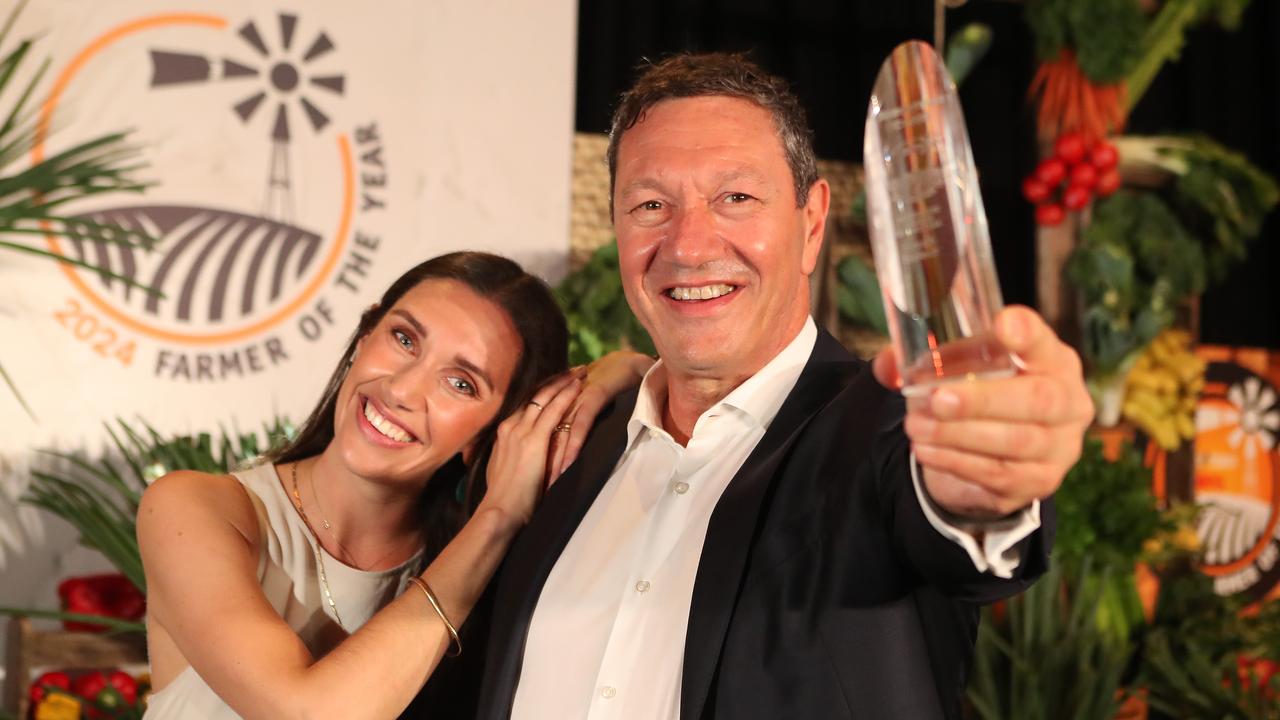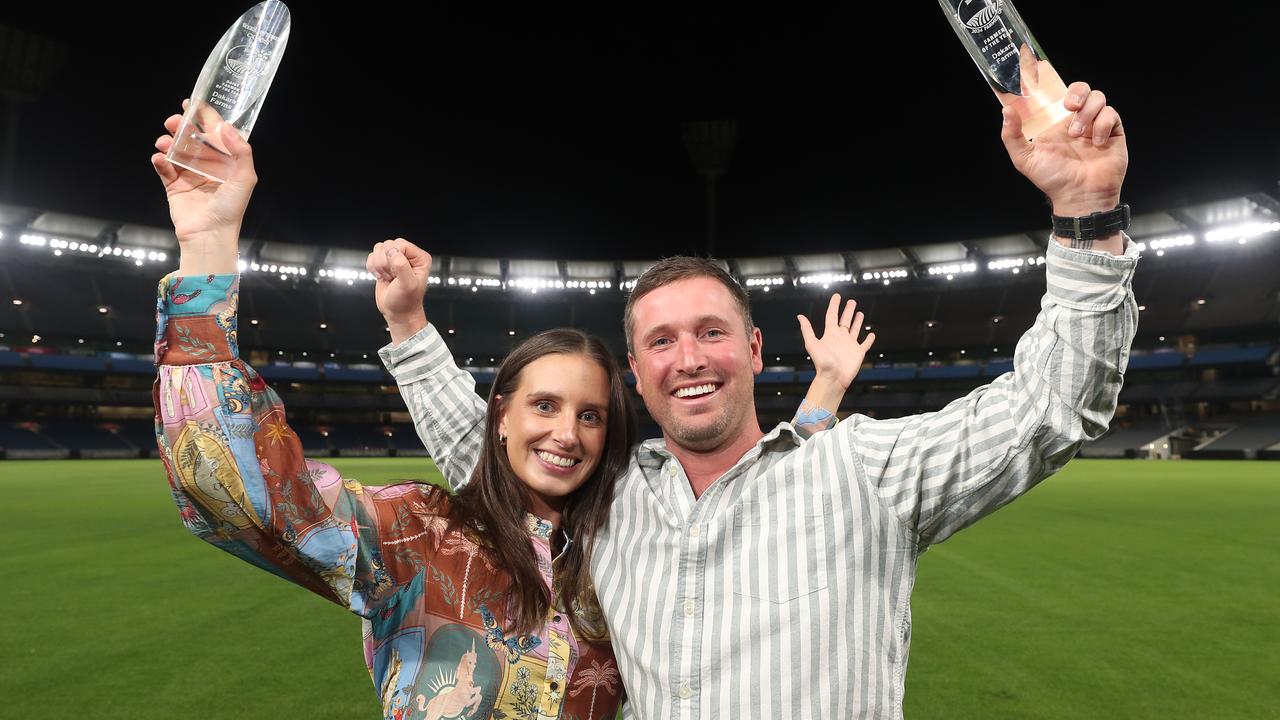Donovan’s Dairy: Mann family from Wye in South Australia go for growth
THESE leading South Australian dairy farmers are going for growth, writes KATE DOWLER.

IT’S no mean feat. In less than two decades, one of Australia’s largest family-owned dairy farms, Donovan’s Dairy at Wye in South Australia’s lower South East, has grown from 400 to 2300 Friesian milkers.
And James and Robyn Mann will grow that number by another 400, thanks to a recent purchase of a neighbouring property that has taken their holding to 1700ha.
Donovan’s currently produces 19-21 million litres of milk from 680ha of irrigation under 14 pivots and dryland pasture in a 700mm rainfall zone. The Manns use a mix of new technology — a keen investment in genomics, for example — but do not jump at every new gadget.
“If it isn’t broke we don’t fix it,” James said. “I’d prefer to buy more land than spend it on new technology that I’m not sure will work.”
James moved to Australia from England when he finished school. With three brothers and 13 cousins on farms in the UK, farming runs strongly in the blood.
The Manns bought a Queensland farm in 1981 and James visited both it and Marcus Oldham College at Geelong, and took a liking to what he saw.
He said Australian agriculture presented new opportunities and a chance to get into animal farming, which his UK parents were leaving.
After studying at Marcus Oldham, James and Robyn — originally from New Zealand — bought a farm at Numurkah, farming there from 1989 to 1998, when they bought land at Wye.
“It was a sheep farm and had just one hayshed,” he said. “We bought in March and milked in June.” his was a $6.5 million infrastructure investment.
“We were running our own show then, but used equity from the Queensland farm that was my inheritance,” James said.
“At Numurkah, we took 120 cows to 400 cows and 3.5 million litres.
“We brought those cows here and went from 400 to 1200 the first year, 1500 quickly, then more slowly to 2000-2300 cows that we milk now.”
James, also a Dairy Australia director, said work-life balance was important. Both he and Robyn pursue their own interests and have plenty of time off-farm, overseas and with children, Adam, 20, and Georgie 14.
FINDING VALUE
JAMES said their equity was now more than 50 per cent — a figure he is relaxed about.
“You’ve got to have a good relationship with your bank. Deliver and communicate,” he said.
“You’ve got to want to grow. We did it on sweat-equity at first.”
He views cashflow as “king”.
“The enterprise needs to be profitable but land always (appreciates).”
The family meets with their accountant, bank manager and two consultants every few months to track progress.
Donovan’s has two calving periods: 1250 cows calve August-September, and 750-900 in February-March.
“Spring-calving cows are for pasture; autumn calving is for money,” he said.
Each year the Manns’ property produces 3000-5000 tonnes of pasture and lucerne pit silage, 3000-4000 silage rolls and 6000-7000 tonnes of corn silage.
Milking cows receive the bail ration of 7-12kg/day of grain, plus 2-7kg at the feed pad and 5-12kg of grazed pasture.
“We’ve tried to become self-sufficient on forage production and buy in dried distillers grain, barley, canola and lupins,” James said.
Up to 7000 tonnes of concentrate is bought annually, 80 per cent of which is grain.
“Heifers, cows and calving cows are all fed separately, depending on the stage of lactation, and calving time,” James said.
This groups their nutritional needs, allowing the Manns to prioritise freshest cows, and it aids heifer fertility.
TAKING A STAND
THE dairy is a 116-stand rotary with cup removers.
Irrigation begins in September-October and finishes in March-April.
”There’s 110ha of lucerne, 100ha of corn for silage and the rest is perennial ryegrass and white clover,” James said.
He said he saw big potential in pasture breeding programs.
“Corn is doing about 25 tonnes/ha and five tonnes/ha of annual grass in the winter,” he said. ““Lucerne produces 20 tonnes/ha harvested and a few tonnes grazed.”
Pasture utilisation for perennial ryegrass is 12-13.5 tonnes/ha under pivots.
In dryland pastures, best soils yield nine to 10 tonnes/ha, including three to four tonnes/ha of silage or hay, or five to seven tonnes/ha on poorer soils.
Soil depths vary from “practically nothing” to 60cm of deep sandy loams, loams and terra rossa over limestone.
James said the business would not compromise on two aspects of production — genetics, which have a compounding effect — and fertiliser.
Bloodlines are drawn mainly from the US and Canada, as well as Europe, with a focus on fitness traits, productive life, daughter fertility and mastitis resistance.
“We look for easy management cows, not necessarily the pretty ones,” James said.
The Manns have been genome testing all heifers for five years.
“We have 150-200 excess heifers each year so it is worth getting the right ones,” he said.
“Genomics allowed to measure those (fitness) traits.”
It costs $50 a head to genome test, but Donovan’s is part of industry reference group Ginfo, which reduces costs. Heifers are also rated for the phenotype and herd tested.
“Fertility has improved over time and we are getting 4 per cent more calves born from AI,” he said. The AI rate was 38 and is now 42 per cent, over a 12-year period.
On milk prices, James said a base figure, where they could generally make money, was $6/kg milk solids.
“If we think we can feed for a profit we’ll feed; I look at cashflow,” he said.
MAKES SENSE
JAMES is not willing to name his cost of production but concedes ”you’d like to think feed costs would be about 55 per cent of income; rough rule of thumb, we try to feed about 0.3kg of grain per litre of milk”.
Labour and fertiliser are two other major costs.
Donovan’s has 20 staff including three managers who have been with the Manns long-term.
James sees great potential for technology to help manage pasture.
“Going forward there is massive potential to use drone technology as a flyover measure for pasture nutrition attributes; if you can do that it takes guesswork out,” he said.
“Now, we do a pasture walk every three days and balance rations around what’s available.”
James said he had never set a goal of the number of cows he wanted to milk, adding that it “just evolved”.
He said good service was more important than ringing around for quotes, often swapping suppliers. “It is more important to have the service than chase the last dollar,” he said.
The Manns are contracted to Murray Goulburn, but are considering other options when their contract expires.
“That situation is fluid, and I don’t know where we’ll end up,” he said. “My preference is always to supply a strong, well-run co-op; but how the industry might look without it, that is a good question.
“You don’t need a poorly ran co-op that pulls the price down.”


